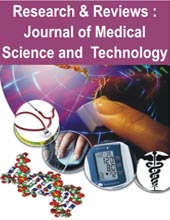
Tabish Ahmad,

Prince Kumar,

Ajit Pal Singh,
- Student Sharda School of Allied Health and Sciences, Sharda University U.P India
- Student Sharda School of Allied Health and Sciences, Sharda University U.P India
- Assistant Professor Sharda School of Allied Health and Sciences, Sharda University U.P India
Abstract
Hereditary spherocytosis (HS) is an inherited blood disorder that disrupts the shape and flexibility of red blood cells (RBCs) due to genetic mutations. These abnormal, sphere-shaped RBCs, called spherocytes, are prematurely destroyed in the spleen, leading to hemolytic anemia. Symptoms range from mild fatigue to chronic weakness and shortness of breath. While incurable, Hereditary spherocytosis can be effectively managed. Regular monitoring, folic acid supplementation, and in severe cases, splenectomy (surgical removal of the spleen) can improve quality of life for affected individuals. Consulting a healthcare professional is essential for diagnosis and creating personalized treatment plans. Hereditary spherocytosis presents a complex picture with diverse symptoms and management strategies. Understanding the underlying mechanisms, potential symptoms, and available treatment options empowers both individuals and healthcare professionals to navigate this condition effectively and achieve a better quality of life. Consulting a healthcare professional for individualized diagnosis and treatment remains paramount for those living with Hereditary spherocytosis.
Keywords: Spherocyte, RBC, Symptoms, Splenectomy, Disorder.
[This article belongs to Research & Reviews : Journal of Medical Science and Technology(rrjomst)]
References
- SINGH SINGH, A. P., SAXENA, R., & SAXENA, S. (2022, January 10). A STUDY ON THE WORKING OF BLOOD BANK. Journal of Medicine and Health Research, 1–5. https://doi.org/10.56557/jomahr/2022/v7i17427
- Singh AP. IMPORTANCE OF PAPANICOLAOU STAINING IN GYNECOLOGIC CYTOLOGY. EPRA International Journal of Multidisciplinary Research (IJMR). 2022 Sep 21;8(9):216–9.
- Litjens G, Sánchez CI, Timofeeva N, Hermsen M, Nagtegaal I, Kovacs I, Hulsbergen-Van De Kaa C, Bult P, Van Ginneken B, Van Der Laak J. Deep learning as a tool for increased accuracy and efficiency of histopathological diagnosis. Scientific reports. 2016 May 23;6(1):1–1.
- Ismail SM, Colclough AB, Dinnen JS, Eakins D, Evans DM, Gradwell E, O’Sullivan JP, Summerell JM, Newcombe RG. Observer variation in histopathological diagnosis and grading of cervical intraepithelial neoplasia. British Medical Journal. 1989 Mar 18;298(6675):707–10.
- Van den Bent MJ. Interobserver variation of the histopathological diagnosis in clinical trials on glioma: a clinician’s perspective. Acta neuropathologica. 2010 Sep;120(3):297–304.
- Singh AP, Saxena R, Saxena S. Plasma apheresis procedure. EPRA International Journal of Multidisciplinary Research (IJMR). 2022 Jul 20;8(7):205-18.
- Singh AP, Mouton RJ, Sharma MK, Ihotu-Owoicho AI. When will this pandemic end? A review. Journal of Basic and Applied Research International. 2021 Dec 29;29(27):10.
- SINGH, A. P., SAXENA, R., & SAXENA, S. (2022, January 10). A STUDY ON THE WORKING OF BLOOD BANK. Journal of Medicine and Health Research, 1–5. https://doi.org/10.56557/jomahr/2022/v7i17427
- Jyoti Batra, Ajit Pal Singh, Rahul Saxena, Suyash Saxena, & Komal Goyal. (2022, October 12). BLOOD COMPONENTS AND ITS USAGE: A CLINICAL INSIGHT FROM DIAGNOSTIC LENS. Journal of Pharmaceutical Negative Results, 1747–1750. https://doi.org/10.47750/pnr.2022.13.s06.230
- Obiajulu CV, Ochanya OE, Singh AP. ADVERSE REACTION AFTER BLOOD DONATION IN BLOOD BANK. International Journal of Pure Medical Research. 2022 Oct 1;7(10).
- Singh AP, Batra J, Khan SS, Saxena R, Saxena S. Diagnosis and treatment of Wilson disease: An update. Cardiometry. 2022 Dec 1(25):1397–400.
- Bosworth MC, Olusola PL, Low SB. An update on emergency contraception. Am Fam Physician. 2014 Apr 1;89(7):545-50. PMID: 24695600
- Singh AP, Heldaus J, Msaki AP. Hemodialysis Complications: A Clinical Insight, International Journal of All Research Education and Scientific Methods (IJARESM), Volume 11, Issue 3,pp:640–647.
- Singh AP, Saxena R, Saxena S. AN ELABORATED STUDY ON BIO-MEDICAL WASTE AND ITS SUCCESSFUL ADMINISTRATION. International journal of Recent Scientific Research vil 13, Issue 8, pp:2121–2126.
- Singh AP, Chhimpa VK, Saxena R, Saxena S, Batra J. Susceptibility to Cervical Cancer: An Overview, de Freitas AC, Gurgel AP, Chagas BS, Coimbra EC, do Amaral CM. Susceptibility to cervical cancer: an overview. Gynecol Oncol. 2012 Aug;126(2):304–11. doi: 10.1016/j.ygyno.2012.03.047.
- Singh AP, Saxena RA, Saxena SU. Hemoglobin estimation by using copper sulphate method. Asian Journal of Current Research. 2022 Jul 13;7(1):13–5.
- Singh AP, Saxena RA, Saxena SU. Protocols for blood collection in a blood bank. Journal of Medicine and Health Research. 2022 Sep 1:16–21
- Singh AP, Saxena R, Saxena S. Cytopathology: An Important Aspect of Medical Diagnosis. Research & Reviews: Journal of Oncology and Hematology. 2023; 12 (3): 13–18p. Cytopathology: An Important Aspect of Medical Diagnosis Singh et al. STM Journals. 2023:2.

Research & Reviews : A Journal of Medical Science and Technology
| Volume | 13 |
| Issue | 01 |
| Received | March 5, 2024 |
| Accepted | March 10, 2024 |
| Published | April 11, 2024 |

